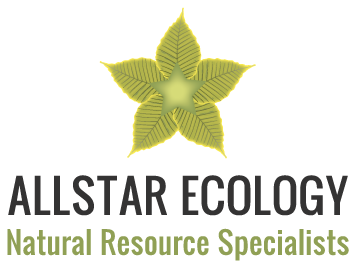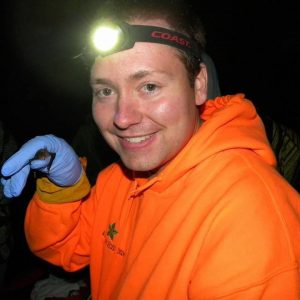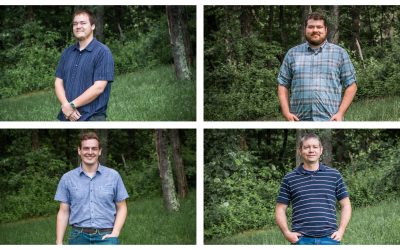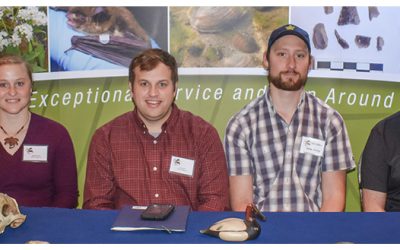Bat Conservation & Survey Solutions
Innovative Bat Services & Solutions
AllStar has developed a bat program to fulfill the needs of various industries, land managers, and the scientific community. Our team can perform scientific surveys for bat species and their habitat as well as construct habitat improvement such as artificial roosting structures and watering areas for summer bat habitat. AllStar’s qualified bat biologists have performed numerous surveys throughout West Virginia, Ohio, and Pennsylvania for various entities including oil and gas, mining, development, and government.
Our Bat Services Include:
- Mist Netting Surveys
- Acoustic Surveys
- Hibernacula Surveys
- Habitat Assessments and Conservation Plans
- Landscape Level Habitat Modeling
- Artificial Roosts Construction, Installation, and Monitoring
- Potential Roost Tree Creation
- Offsite Conservation Area Establishment and Monitoring
Mist Netting
We have extensive experience conducting mist net surveys for bats, and can complete surveys in a timely and professional manner. Surveys allow for site planning for the avoidance of rare, threatened, and endangered species and their habitat.
Acoustic Surveys
AllStar maintains a large number of acoustic bat detectors and can deploy them in the field for presence/absence surveys or for long-term site monitoring. Acoustic monitoring can provide a much more economical option for surveys on large projects. AIIStar has also had great success when coupling acoustic fieldwork to facilitate lesser effort of mist netting. AllStar biologists have received extensive on-the-job and classroom training, and provide qualitative assessments of acoustic data.
Hibernacula Surveys
We have the equipment and expertise to monitor and survey caves, mine portals, and other potential bat hibernacula. These surveys help ensure that hibernacula are not disturbed if openings are proposed for closure.
Habitat Assessments & Conservation Plans
AIIStar’s biologists can provide an on-site evaluation of sites to check for roosting, foraging, and swarming bat habitat. The assessment includes a summary of forest cover types present and how they relate to bat use, a detailed count of potential roost trees, documentation and characterization of any potential hibernacula, and an assessment of the surrounding landscape using GIS.
We can prepare conservation plans to address and offset potential adverse effects to bat habitat in coordination with the US Fish and Wildlife Service to obtain all necessary permits regarding project development. AIIStar has used various conservation measures, in several combinations, to achieve regulatory compliance.
Landscape Level Modeling
AIIStar has developed the Myotine Suitable Habitat Assessment Model which takes into account various landscape-level factors to determine potentially suitable areas for use by bats, including roosting and foraging habitat. This tool aids in project planning by allowing proponents to avoid areas of higher potential and by identifying the best areas to use for conservation.
Artificial Roosts, Construction & Monitoring
We can provide artificial structures to replace lost roosts or create new potential roost trees for bats. AllStar’s main artificial roost is the “Rocket Box” which simulates the multiple cavities of a hollow tree. Our Rocket Box has received certification from Bat Conservation International, guaranteeing its quality and use of the latest science and knowledge regarding artificial roosts. AllStar intends to provide quality artificial roosts to ensure the greatest likelihood of bat usage. We also provide artificial bark and nursery box artificial roost options should they be desired.
For more information or to get a quote, check out our Bat Box Sales page.
Potential Roost Tree Creation
AllStar biologists regularly identify trees most suitable for the creation of potential roost trees. Our experience in forestry and wildlife biology has proven valuable in developing habitat management plans for bats. AllStar can provide crews to girdle trees, which will result in the death of a tree, and as the bark loosens the tree will provide roosting space. AllStar has also developed a technique to create cavities in standing trees (alive or dead) for use as roosts by bats, particularly the northern long-eared bat.
Offsite Conservation Area Establishment & Monitoring
AllStar has undergone extensive training and has experience creating small wetlands. These wetlands are often added to bat conservation areas to provide high-quality feeding and drinking resources for bats. These wetlands serve as excellent survey locations during the monitoring of established conservation sites.
We provide monitoring services for all habitat enhancement activities and utilize mist netting, acoustic, and infrared video equipment to evaluate practices and provide regulatory agencies documentation of the effectiveness of conservation measures.
Eric Schroder – eric.schroder@allstarecology.com
Bat Biologist/ Environmental Scientist II
Eric Schroder is a Bat Biologist/Environmental Scientist II with AllStar Ecology. Mr. Schroder specializes in Indiana and northern long-eared bat presence/absence surveys, wildlife telemetry, bat habitat suitability studies, and ArcGIS. He has also worked on numerous oil and gas projects delineating streams and wetlands for avoidance, conservation, mitigation, and permitting for gas-related construction activities.
RECENT PROJECTS
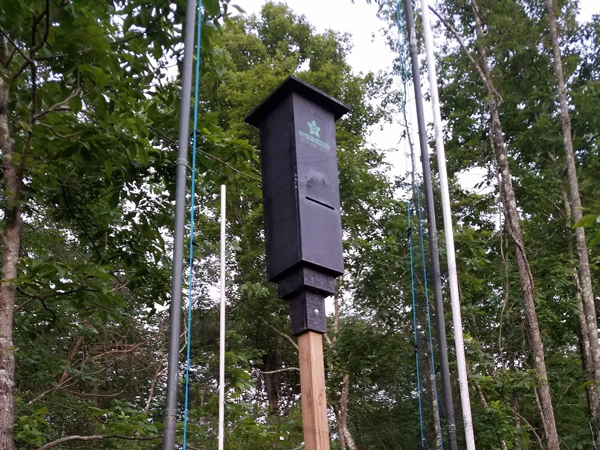
Pipeline Habitat Assessments & Conservation Plan
AllStar conducted habitat assessments for rare, threatened, and endangered bats along a 14 mile long pipeline corridor in Doddridge County, WV. We developed a Habitat Conservation Plan for the Project and installed 70 artificial roosts for offsetting measures onsite. Monitoring efforts documented use of 48 artificial roosts (69%) and the capture of four northern long-eared bat maternity colonies, constituting 49 individual threatened bats.
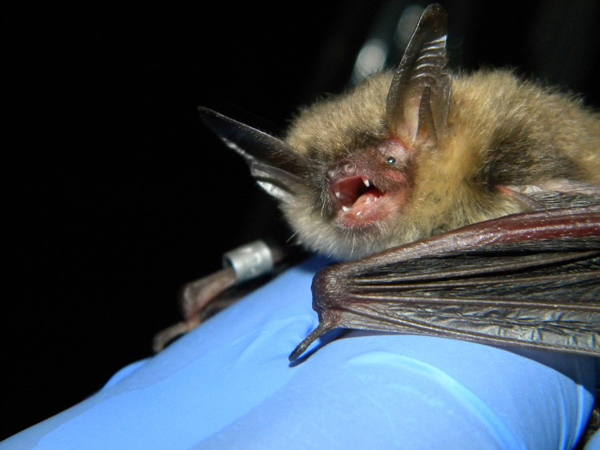
RTE Surveys and Managment Plan
AllStar conducted surveys for rare, threatened, and endangered bats on 4,125 acres in Preston County, WV. Our biologists were responsible for survey coordination, design and implementation, and bat identification. We successfully captured the threatened northern long-eared bat and locally rare small-footed bat. AllStar also developed an Endangered Species Management Plan for the conservation of Indiana and northern long-eared bats for the Project which has been accepted by the USFWS.
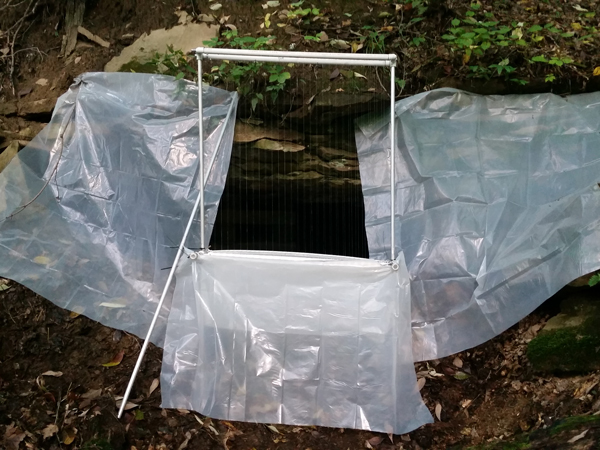
Mine Portal Surveys
AllStar conducted fall swarming surveys at 69 mine portals across 11 West Virginia counties. Seven hibernacula were documented including four northern long-eared bats (including acoustic data), three small-footed bats, three big brown bats, and one tri-colored bat site(s). Reports detailed capture of bats, acoustic recording identification, and recommendations for mine hibernacula management.
NEWS
AllStar Welcomes New Staff
AllStar Ecology is excited to announce the addition of four new staff members with a wide range of biological and environmental experience and expertise. Matthew Gilkay, Environmental Scientist I / Aquatic Biologist, is assisting AllStar with freshwater mussel...
AllStar Attends Joint Bat Working Group Meeting
AllStar Ecology was well represented at the Joint Bat Working Group Meeting in Roanoke, VA. The March 27-29, 2018 meeting was an assemblage of the Northeast Bat Working Group, Midwest Bat Working Group, the Southeastern Bat Diversity Network, and the Colloquium on the...
Indiana Bat Habitat Preferences Article by AllStar’s Eric Schroder
Eric Schroder, AllStar Ecology Bat Biologist, was recently the lead author on a journal article titled “Indiana bat maternity roost habitat preference within Midwestern United States upland Oak-Hickory (Quercus-Carya) forest”. The article focuses on the Indiana bat, a...
